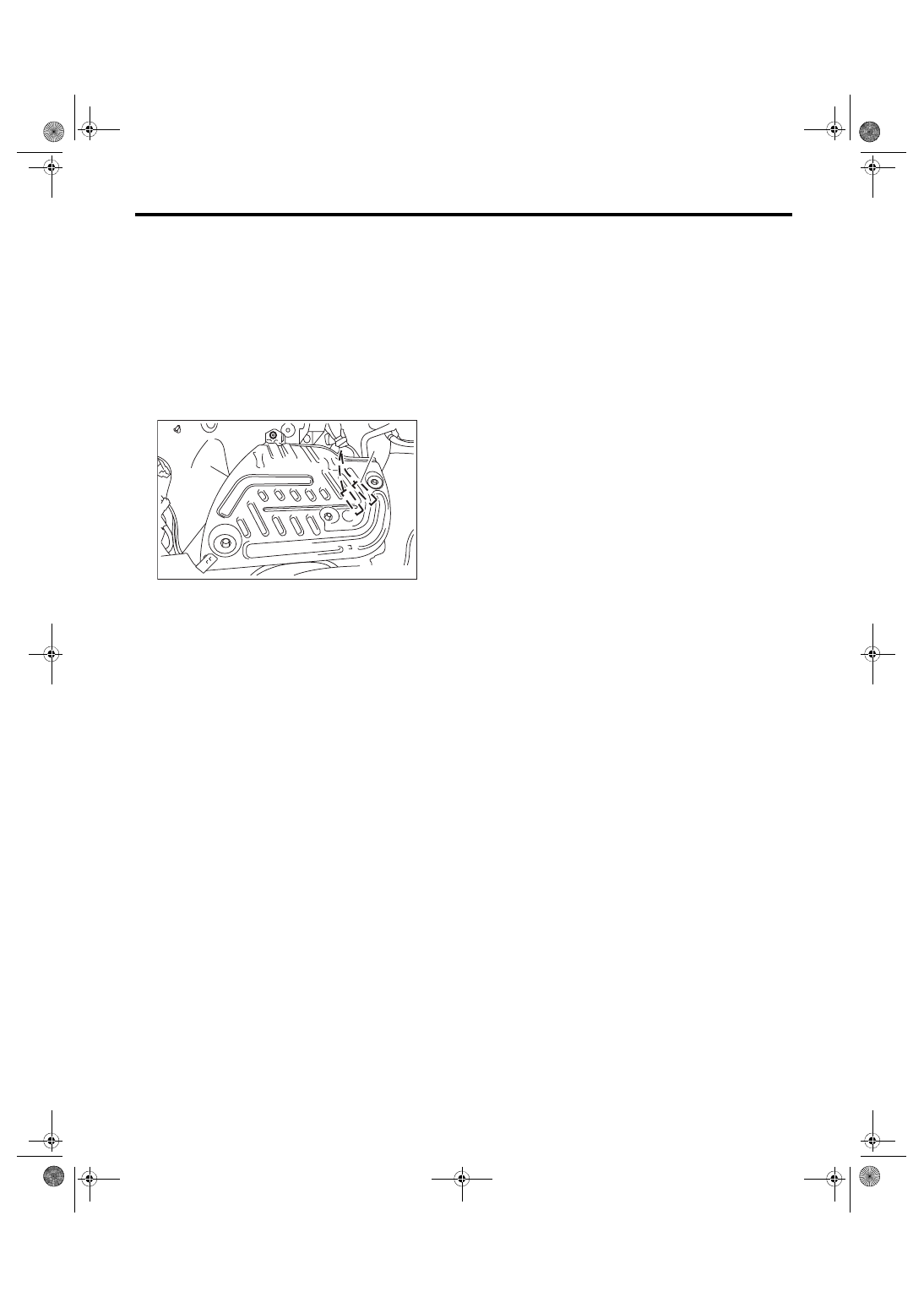Subaru Impreza 3 / Impreza WRX / Impreza WRX STI. Manual - part 15

PI-14
Pre-delivery Inspection
PRE-DELIVERY INSPECTION
26.DELIVERY (TEST) MODE CONNECTOR
1) Turn the ignition switch to ON and check that the
malfunction indicator light starts blinking.
2) If the light blinks, return the ignition key to LOCK.
3) Disconnect the delivery (test) mode connector
under the passenger’s seat.
4) Then, turn the ignition key to ON again.
5) If the malfunction indicator light blinks even
though the delivery (test) mode connector is dis-
connected, carry out an engine diagnosis.
6) Put the disconnected delivery (test) mode con-
nector behind the ECM protector.
27.IMMOBILIZER SYSTEM
1) Check that the engine starts with all keys that
are equipped on vehicle.
2) 60 seconds after turning ignition switch from ON
to ACC or OFF, or immediately after removing the
key, check that the security indicator light is blink-
ing.
NOTE:
If malfunctions occur, refer to “IMMOBILIZER (DI-
AGNOSIS)”. <Ref. to IM(diag)-2, Basic Diagnostic
28.STARTING CONDITION
Start the engine and check that the engine starts
smoothly. If the battery voltage is low, recharge or
replace the battery. If any noises are observed, im-
mediately stop the engine and check and repair the
abnormal components.
29.EXHAUST SYSTEM
Listen to the exhaust noise to see if no noises are
observed.
Check that no leaks are found.
30.INDICATOR AND WARNING LIGHTS
Check that all indicator lights and warning lights are
operating correctly.
31.HEATER & VENTILATION
Operate the heater & ventilation system to check
for normal airflow outlet control, air inlet control, air-
flow capacity and heating performance.
32.AIR CONDITIONER
Operate the air conditioner. Check that the A/C
compressor operates normally and enough cooling
is provided.
NOTE:
To prevent the insufficient lubrication of the air con-
ditioner, operate the air conditioner for five minutes
at idling.
33.CLOCK
Check the clock for normal operations and enough
accuracy.
34.AUDIO
1) Check if the AM/FM radio broadcasting can be
heard.
2) Check that all the radio functions work properly
and the noise level is normal.
3) Check the CD and AUX for normal operation.
4) Check that the AUX is installed into the console
without looseness.
35.NAVIGATION SYSTEM
1) Check all display functions for normal operation.
(Refer to the operation manual.)
2) Check that the navigation system operates nor-
mally.
3) Check the radio, CD player and AUX for normal
operation.
4) Check that the AUX is installed into the console
without looseness.
36.FRONT ACCESSORY POWER SUPPLY
SOCKET
Check the operation of the front accessory power
supply socket.
37.LIGHTING SYSTEM
1) Check the headlight operations. When pulling
out the key, check if the headlight illuminates by
turning the headlight switch from OFF to ON.
2) Check the stop light operation.
3) Check other lights for normal operations.
4) Check that the manual leveler operates normal-
ly.
(A) Delivery (test) mode connector
(B) ECM protector
PI-00441
(A)
(B)